Morning all,
Short version: Foiling is still good. Video available here. It's about 5 minutes. That's probably too long for those of you doing the short tour...in which case the 20 seconds or so from about 3:30 will give you a good flavour for the outing.
Longer version: Same video.
Although he didn't break my boat this time, Alec was quite late! Got the meeting point slightly confused so we waited for each other at either end of the Manly leads, about 1km apart, for 20 minutes!
Conditions: About 16-18knots, reasonable chop, very little traffic. 14m ASV race kite (LEI) - with leaking struts (don't start me on ASV strut design! Grr).
We learnt quite a lot - but have heaps more to learn. But foiling sure is a blast. Amazing feeling - especially the smoothness going upwind over the chop.
Heeling: Often we'd be flying along, bows just kissing the chop with the platform very stable. But a couple of times we started flying the windward hull rather higher than I was comfortable with. (Having said that, reviewing the video shows that we were much flatter than it felt at the time.) Although we carry very little heeling moment, it increases quickly, proportionately, when we
- foil higher
- increase kite elevation
- heel to leeward.
Doing all those at the same time could end badly. This increased heeling moment is countered automatically, at least to some extent, by the foils' feedback loop. And perhaps it would have been adequate if we'd he ld the power on and gone faster - but I was pretty quick to call "dump", which Alec duly did. Capsizing, particularly with no support boat in attendance, would make for a very ordinary day. Looking at the footage from our most concerning windward hull flying episode is a little embarrassing - hardly out of the water...perhaps we need Zebb driving rather me to see what this beast can do!
We also flew the leeward hull, when running quite deep downwind - way too high on a couple of occasions. That was due to poor steering and lift from the kite, not lift from the (hydro)foil...which was, disconcertingly, no longer in the water!
Performance: Top speed, which was fairly constant and similar on all points of sail!, was close to 14knots. That's slower than we've done in displacement mode with less (available) power and more weight on board. But in displacement mode we're much more confident of the stability so could turn the power on. We were feathering/dumping lift most of the time. Elissa and I were out on Friday with an 11m kite and quite a bit less breeze. We still flew a few times and also did 14knots - and were never as worried as on Saturday!
Design: Although the new (laterally) central tow point is very simple and easy to use (OK, having to climb over it when gybing is not all that convenient...), keeping it to leeward would remove the positive feedback coupling from heeling and kite elevation to heeling moment. Moving it to the lee hull would result in leeward heeling inducing no change in heeling moment and increased kite elevation would reduce heeling moment. So I'll ponder a better leeward tow point rig. That might involve an additional beam with traveller just in front of the daggerboards - or new daggerboard cases just behind the (current) main beam. My only other outing in similar conditions with only 2 on board was the first solid flying session with Graham about 6 weeks ago. On that occasion we had the tow point cleated to the leeward gunwale and it was generally more forgiving/comfortable.
Flying height, foil trim: I estimate that the main foils are trimmed to operate at a lift coefficient of about 0.85 at take off, slightly higher if we pitch up (which we didn't feel). This could be increased to about 1.2 without stalling (probably). The footage suggests stable flying at a height of about 150mm. At 150mm with the current foil trim/response, lift coefficient would be about 0.26. This is not a million miles away from what is implied by flying at 7m/s - inverting from that speed, foil sizes, mass of boat and crew etc implies (simple 2D lift calculation) that we were operating at a lift coefficient of about 0.3 (so ignore the erroneous comment about a high lift coefficient at around 3:10 in the video). I count those as reasonably consistent independently obtained estimates of operating lift coefficient. Were we to rake the board a further 3 degrees forward (as Glidefree recommends) or, equivalently, trim the board for 3 degrees greater AoA, the lift coefficient would be 0.3 at about 250mm height. We'll leave it low for now.
Next steps: I think it might be time to get serious about this little boat. It has potential. Pushing it harder will require a support boat (and helmets and better comms gear and...). If any of you know anyone who might be interested in helping, please let me know. I know several of you would be able to help occasionally - but I'll be looking for someone who has more spare time/flexibility who can commit to getting out when the wind is reasonable and at reasonably short notice. And ideally has an adequate support boat!
Thanks: Thanks again to Graham Swannell for the engineering to get this together and to Peter and Ian (Glidefree) for a very well designed and engineered product. Also thanks to Alec for being a bit more careful with my boat this time!
Trevor
